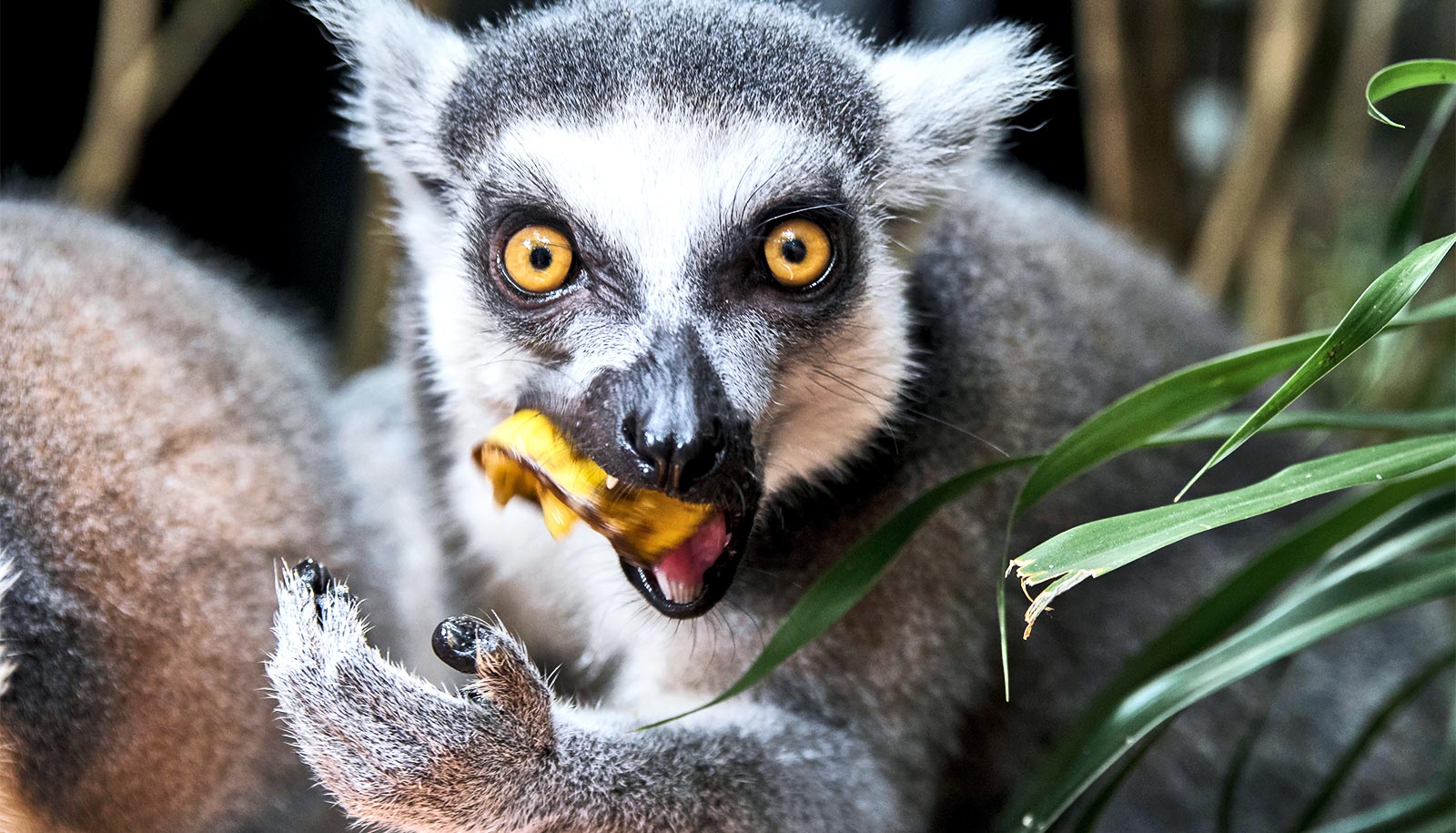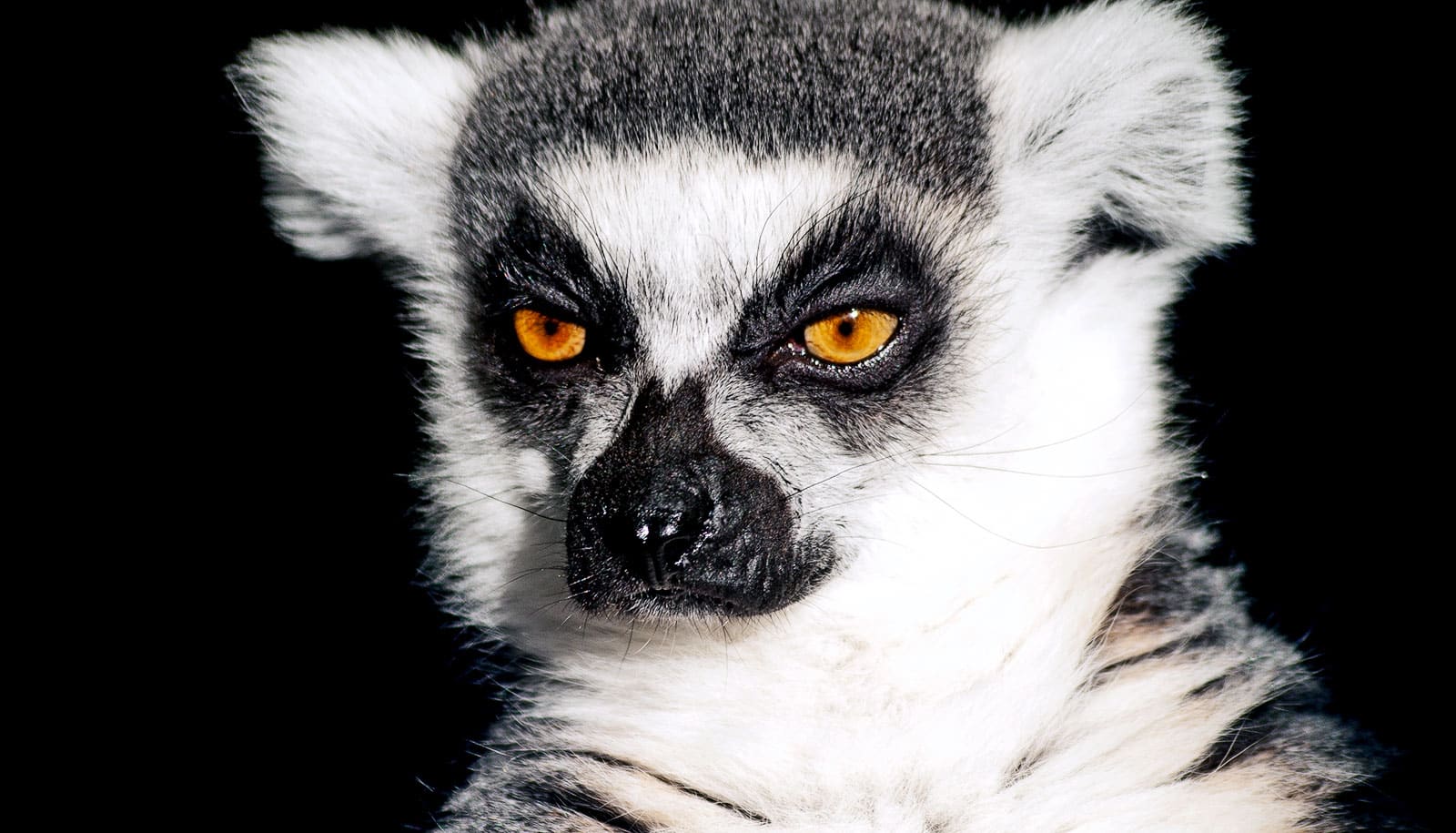Lemurs can use their sense of smell to locate fruit hidden more than 50 feet away in the forest—but only when the wind blows the fruit’s aroma toward them, according to a new study.
“This is the first time research has demonstrated that primates can track a distant smell carried by the wind,” says anthropologist and lead study author Elena Cunningham, a clinical associate professor of molecular pathobiology at New York University’s College of Dentistry.
Many animals use their sense of smell to locate food. However, less is known about whether primates can smell far away food, or if they instead rely on visual cues or memory to find their next meal.
Because many primates—including ring-tailed lemurs, whose diet is a mix of fruit and leaves—live in forests where trees and foliage limit their visibility, being able to smell and locate distant fruit helps foraging.
For the study in the American Journal of Physical Anthropology, researchers tested whether a group of ring-tailed lemurs living in the Lemur Conservation Foundation in Florida could detect hidden fruit from afar using their sense of smell alone.
They hid containers in the underbrush of the forest—some containing ripe cantaloupe and some with fake cantaloupe—at a distance (between 13 and 56 feet) from a path the lemurs routinely used. The containers were not visible from the path, so the lemurs had to use their sense of smell to locate the cantaloupe.
Smells are carried by the wind in “odor plumes,” which animals navigate by monitoring the strength of a smell as they move. They sniff the air at one location, then move and sniff the air again, to see if they are getting closer to the smell in question.
The lemurs could find the cantaloupe when the wind blew the aroma of the fruit toward them. Upon detecting the scent of fruit, the lemurs sniffed the air at one or more locations as they moved toward the fruit. Sometimes, after detecting the smell, the lemurs would return to spots where cantaloupe had previously been hidden before going through the process of tracking the odor plume, suggesting that olfactory cues may trigger memories of past meals.
While the containers of fruit hidden at a farther distance took the lemurs longer to locate, they still found cantaloupe hidden as far away as 56 feet off the path. The lemurs did not find the containers of fake cantaloupe.
“The lemurs were able to detect the smell of the cantaloupe among the complex smells of the forest and successfully navigate the odor plume to the fruit,” Cunningham says. “The results indicate that olfaction may be used to respond to cues from distant sources. The ability to sniff out distant foods may be a critical foraging skill for lemurs and other primates.”
Additional coauthors are from the University of Illinois at Urbana-Champaign, the University of Vermont, the Lemur Conservation Foundation, and NYU. The NYU College of Dentistry Academy of Distinguished Educators and the NYU Research Challenge Fund Program funded the work.
Source: NYU


